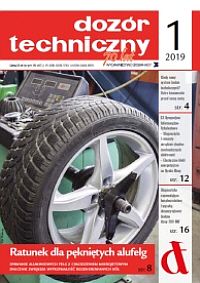
- Diagnostics ensuring safety and high availability of 200 MW class blocks
The development according to the GDP growth criterion is accompanied by a continuous increase in energy demand. Improving energy efficiency only reduces its scales. The burning of fossil fuels, in particular coal, is still the largest contributor to satisfying energy needs. Admittedly, as we often hear and read, RES energy is getting cheaper, but for some reason the world's largest consumers and producers choose its "more expensive" version. There is no indication that the situation could radically change in the foreseeable future. This also applies to the Polish power system. It should first of all meet the regulatory challenges in both the manufacturing and transmission sectors. Both parts of the power infrastructure come from a distant past. New generation units, built and under construction, with very high power and individual technical solutions may require regulatory support and security to a greater extent than themselves, more and more demanding of regulation, to implement. The economic efficiency of such large sources exploited is a separate problem. As new coal-fired blocks (except those currently under construction) may no longer be created, this part of the Polish energy infrastructure should be productively efficient for around 20 years, at least until the implementation of long-term policy or strategy for energy.
- When is the new technical research system? Sharp braking against the meta itself
Safer, more modern, even revolutionary, but more expensive, or - so far - slowly, with amendments, but without unnecessary costs. What is it about the old dilemma world? This time, the system of organization of vehicle technical tests and supervision over the operation of the control station. The government draft amendment to the road traffic law was almost enacted when the Sejm suddenly stopped work. When and in what form the "almost-adopted" regulations will come into force, no one knows, but they must enter, because this is the requirement imposed by the European Union. The current system of conducting technical tests of vehicles in Poland specifies many times corrected traffic law, a statute from 1997. According to many specialists, the provisions are outdated, vehicle technical inspections are fiction, and thousands of cars drive on roads. should not. In April 2014, Directive 2014/45/EU of the European Parliament and of the Council on interim roadworthiness tests for motor vehicles and their trailers was published. It defines the minimum requirements necessary to introduce a coherent and uniform system of technical testing of vehicles in all EU member states. This directive should be implemented into Polish law by May 20, 2017, but it should be applied no later than May 20, 2018. However, it has not been introduced and it is not even clear when it will happen, although the government has prepared an appropriate project.
- XX Information and Training Symposium DIAGNOSTICS AND RENOVATIONS OF THERMAL AND MECHANICAL APPLIANCES. Flexible power blocks on the Power Market
On October 3-5, 2018, in Katowice City Center in Katowice, the Jubilee Information and Training Symposium organized by Company of Technical Service"Pro Novum" took place. DIAGNOSTICS AND RENOVATIONS OF MECHANICAL-MECHANICAL DEVICES OF POWER PLANT - Flexible power units for Power Market. The symposium was organized in cooperation with Industrial Society, Polish Power Plants, the Chamber of Power Industry and Environmental Protection, ENERGA Power Ostrołęka, ENEA production and the Energy Center of the AGH University of Science and Technology.
- Quality control of the wheel rims after welding repairs with the use of micro-cooling
Higher and higher quality standards during vehicle repairs require searching for new solutions that allow obtaining the best results. Although manufacturers of aluminum alloy car wheels do not provide any recommendations or repairs, these repairs are very widespread for economic reasons. Regeneration plants offer repairs to damaged wheels both in the area of straightening and welding of cracked wheeled rims. The article describes the results of research aimed at increasing the exploitation properties of wheels made of aluminum alloys with silicon regenerated with welding methods using innovative technology of micro-jet cooling applied just after the welding process. Currently, the most popular welding process for this type of elements is the MIG method. The main goal of the research was to take action to improve the operational properties of car wheels made of silumin after welding repairs. After conducting a series of tests in laboratory conditions, it was necessary to conduct a series of tests on a real object, in conditions as close as possible to the actual cooperation of the wheel with the ground.
Dozór Techniczny (Technical Supervision) - full list







